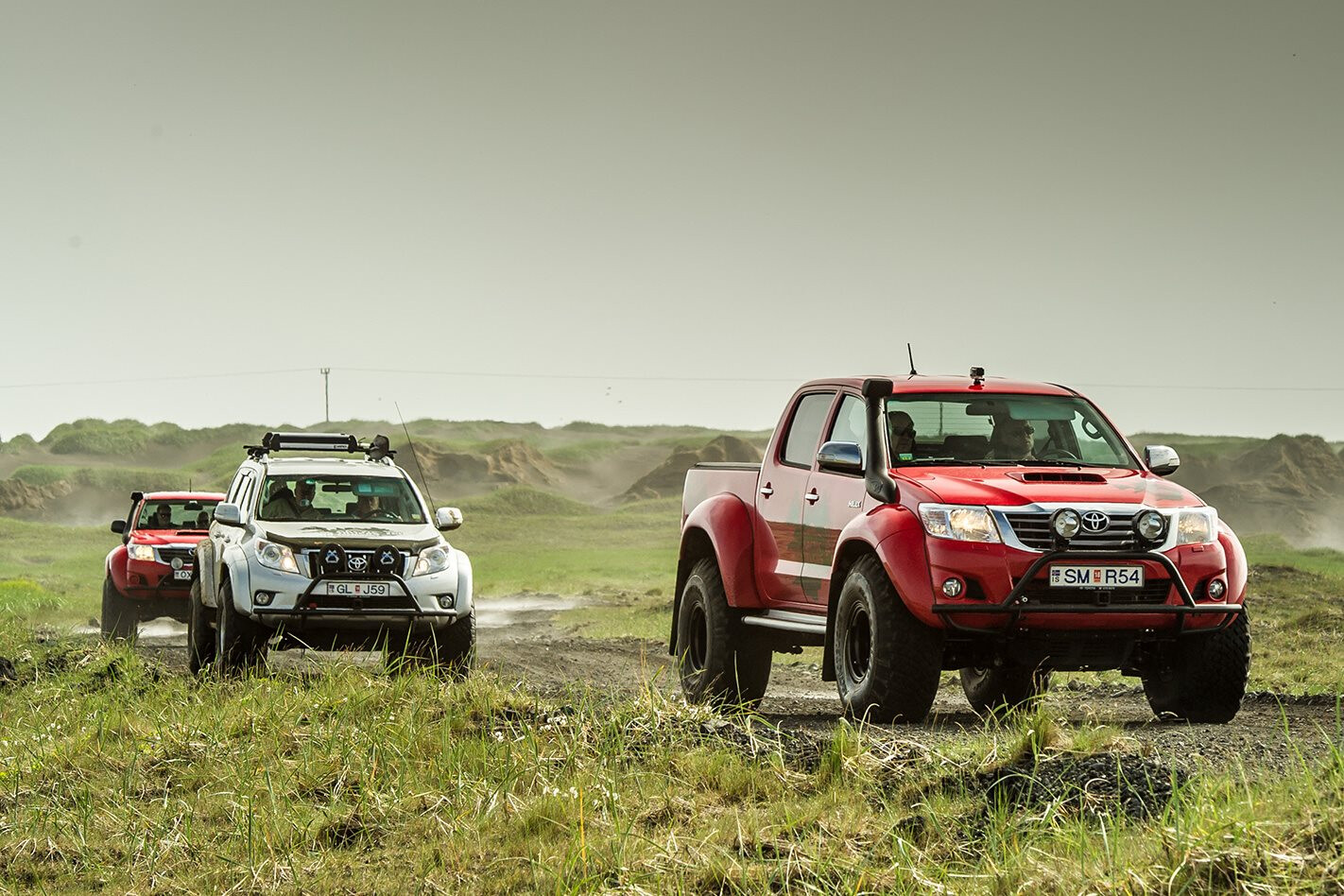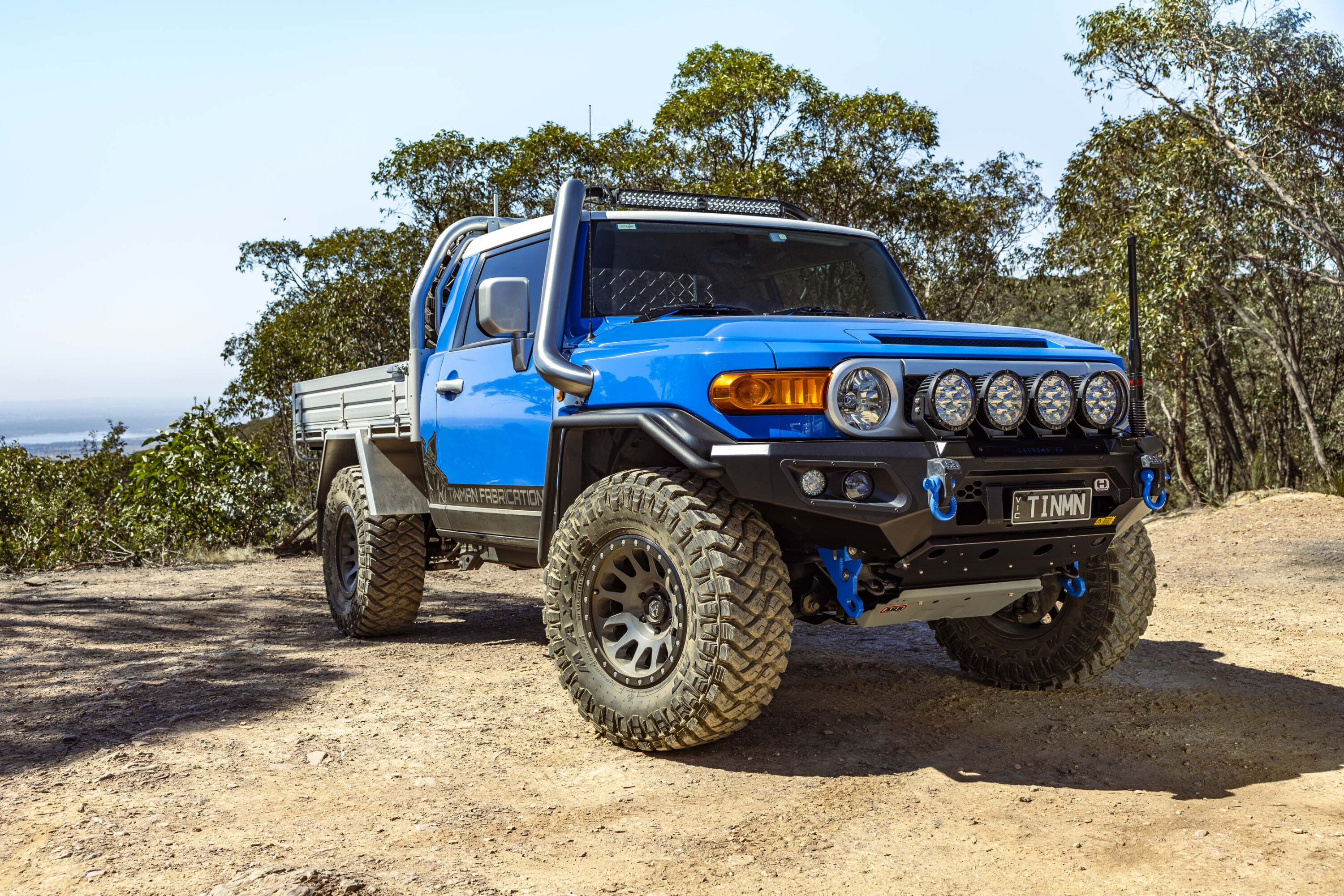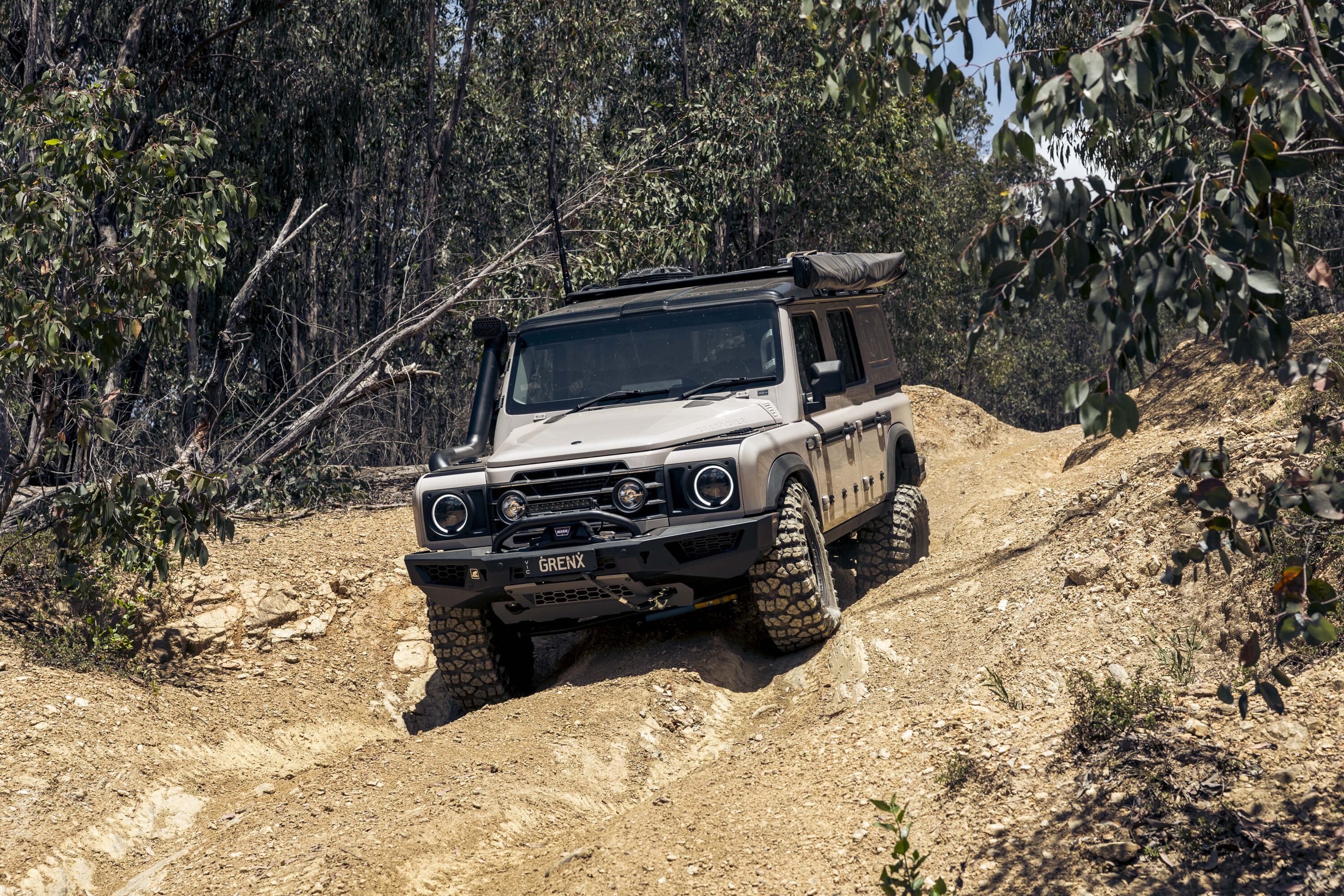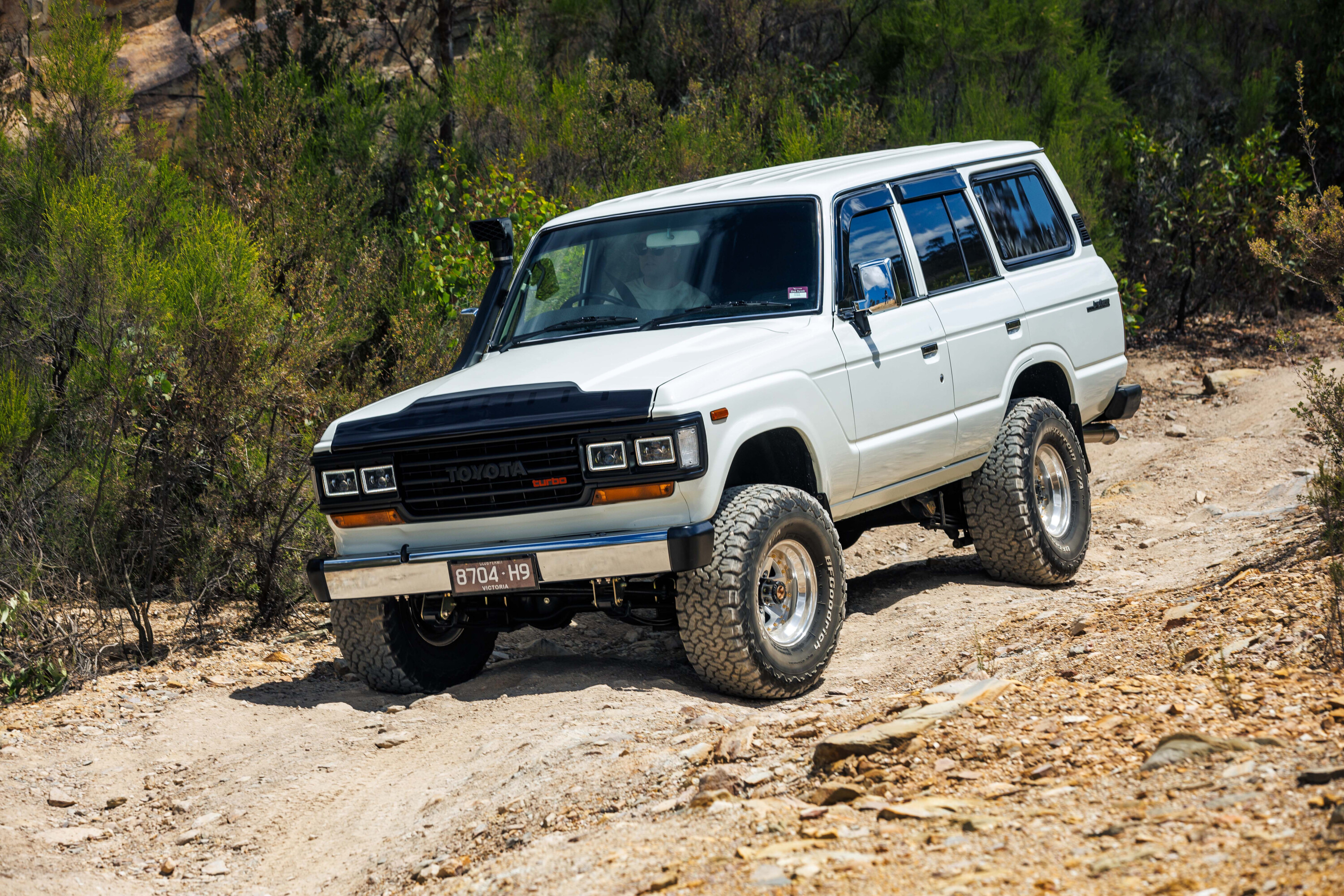IT USED to be quite a challenge being an Icelandic off road enthusiast. Once the long, harsh winter set in, the volume of ice and snow across the country rendered many places on the small island inaccessible by conventional vehicles.
This article was originally published in the October 2014 issue of 4×4 Australia.
Of course, Iceland is home to many unconventional vehicles, such as the snowmobile, but attempting to drive a snowmobile on the public highway is about as safe and comfortable as riding a shopping trolley down a flight of stairs, so it only really solved half the problem.
Then someone discovered that if you fit a conventional 4×4 with large tyres run at very low pressures, it sort of ‘floats’ across the snow. Fitting even bigger tyres run at even lower pressures (no higher than 5psi) made progress across the white stuff even easier. Suddenly it became practical for off roaders to use their vehicles all year ’round, and at much higher speeds than previously possible. In a country with more spectacular scenery per square kilometre than most, that was pretty exciting news.
Unsurprisingly, it didn’t take long for someone to spot the business opportunity in this, and so Arctic Trucks was born. Originally a part of Toyota Iceland, Arctic Trucks became a separate entity in 2005 and its current home base is a workshop on the outskirts of Reykjavík. We were in the care of company founder and chairman, Emil Grimsson, one of those people who make you wonder what you’re doing with your life.
As well as running an international business, Grimsson now spends large portions of his time on month-long expeditions guiding scientific teams cross the Antarctic plateau. It’s an area of significant opportunity for Arctic Trucks, as the modified offroaders are superior in most areas to the tracked vehicles traditionally used in such places, though apparently scientists aren’t easily swayed.
“We are proven to have five to 10 times better fuel economy, we are three to six times faster, we have a longer range, and a lot less maintenance, [but] the scientific community is very slow to react,” Grimsson says.
Grimsson also played a pivotal role in Top Gear’s 2007 expedition to the North Pole. As well as providing the Hiluxes for transport, he played point man on a snowmobile, ensuring the Pommie presenters didn’t drive into a crevasse.
Our mounts were very similar in specification to those that completed the epic Top Gear journey northwards. While theoretically any ladder-chassis vehicle could receive the Arctic Trucks treatment, Toyota vehicles – predominantly Hilux and Prado, though a number of full-size Land Cruisers have also been completed – are the speciality due to their inherent strength and product knowledge acquired over almost three decades.
The level of modification required depends on the size of tyre fitted. The smallest and cheapest option, a 35-inch tyre, is the most popular. Go up a size to 38-inch rubber and both the modifications and the price tag starts to get serious – the work adding around 50 per cent to the base vehicle’s price. From there the sky’s the limit, as evidenced by the custom-chassis 6×6 Antarctic exploration vehicles parked outside the workshop – yours starting at a cool $215,000.
A 50 per cent premium might sound pretty steep for fitting some big tyres, but as Grimsson leads us through the workshop and past vehicles in various stages of build, it’s easy to see where the time – a ‘38’ takes around four weeks to build – and money goes.
Ironically, given their aggressive appearance, Arctic Truck’s goal is to make the vehicles look as standard as possible. Early vehicles accommodated larger tyres in the traditional way by lifting the body, but the negative effect it had on handling gave Toyota Iceland cold feet about supporting the project.
In order to retain the standard vehicle’s dynamics but still accommodate the larger tyres, the factory front suspension pick-up points are relocated forwards and lower. This effectively extends the wheelbase and keeps the centre of gravity as low as possible to improve stability.
The factory wheel-arches are cut away to provide clearance, which also requires the body mounts be relocated. The steering geometry is also altered to match the new suspension setup. No modifications are needed at the rear to accept 38-inch tyres, but should a buyer tick the 44-inch option (a rare occurrence) the rear suspension is moved 16cm further back to try and keep the stock vehicle’s handling and stability.
Engines and drivelines remain standard but a piggyback ECU is installed to handle the recalibrated speedo, which also makes it easier to pinpoint whether problems have occurred in the truck’s standard electronics or as a result of Arctic Trucks’ modifications. Despite the substantial amount of re-engineering that takes place, Toyota still offers a three-year warranty on all factory parts and Arctic Trucks offers a three-year warranty on all its modifications in Norway and two years in Iceland. “We have about 800 35-inch vehicles on the road in Norway with next to no problems,” Grimsson said.
HIGH ROLLIN’ On the road the net result of these modifications was, well, not much, as our test vehicle drove more or less like a regular Hilux. There were small differences of course. Those enormous Dick Cepek tyres made quite a lot of noise on the highway but, with the equivalent of a giant balloon at each corner, the payoff was a beautifully absorbent ride. There’s also none of that ‘tippy-toes’ feeling that can occur in vehicles that have been lifted too high.
Initially our route followed the motorway out of Reykjavík, passing unintelligible road signs covered in place names that look like a cat has drunkenly walked all over a keyboard. Thankfully, the tarmac soon ended and the convoy headed into the Icelandic highlands following one of the country’s many geothermal pipelines. Despite being the middle of summer, the temperature was barely out of single digits and dirty patches of snow still covered shaded areas.
The terrain wasn’t particularly challenging, but we stopped to deflate the tyres anyway, as the lower pressures help absorb impacts and reduce the risk of punctures. “You have to let the tyres do the work,” Grimsson said sagely. An on-board compressor in each vehicle made re-inflating the tyres the work of a moment. The TJM snorkel proved its worth during the many river crossings, but the front and rear ARB Air Lockers remained untested. Grimsson is full of praise for the Aussie-built aftermarket gear, as a lot of the equipment installed in the early days was of extremely poor quality.
The best part about these vehicles, however, is that you don’t have to take our word about their abilities.
Thousands of kilometres of reasonably well-formed trails criss-cross Iceland, and Arctic Trucks runs self-drive tours starting from A$900 per car (maximum of four people) for a half-day tour and around $1300 for a full-day tour.
While getting to Iceland takes a fairly concerted effort (it’s about a four hour flight from Paris), exploring it by 4×4 is the ideal way to soak up the unique and amazing landscape for which the country is renowned.
TRUCKIN’ ON Arctic Trucks can trace its origins back to 1990, when Toyota Iceland began to offer the large-tyre modifications in response to customer demand. While popular, the negative handling effects associated with lifting the vehicles led Toyota to actively discourage customers from having the conversion done, stating it would not honour any warranty claims on modified vehicles.
Grimsson believed there was another way, and began to investigate modifying the chassis to accept the larger tyres yet still retain the standard vehicles’ dynamics. Business boomed. At one point up to 45 per cent of all new Hiluxes and 35 per cent of all new Prados sold in Iceland were being fitted with the Arctic Trucks modifications, with the work being of a high enough calibre to satisfy Toyota’s tough warranty standards.
Then came the Global Financial Crisis. Iceland’s banking industry ceased to exist, housing values plummeted and consumer demand disappeared almost overnight. Having produced 474 vehicles in 2007, Arctic Trucks delivered just nine in 2009. Grimsson admits the business was extremely close to going under, but by diversifying its interests into used vehicles and servicing and concentrating on exports it managed to stay afloat.
Production now sits at around 40-50 units per annum, mostly for export, as the Icelandic market has not recovered. Arctic Trucks employs around 30 people in Iceland, 70 in Norway, 10 in the United Arab Emirates and there’s a new franchisee in Russia.
While initially produced for off road recreation, commercial applications make up a growing portion of the business. Contracts with Scandinavian militaries have seen Arctic Trucks’ work deployed in Middle East conflict zones, and there are now 18 vehicles in Antarctica supporting scientific research teams.
In contrast, there is growing interest in these unique offroaders from the UAE for cosmetic purposes. It seems that in a land where Ferraris and Lamborghinis are commonplace, nothing turns heads like a Toyota that appears to have recently emerged from Dr. Frankenstein’s laboratory.






